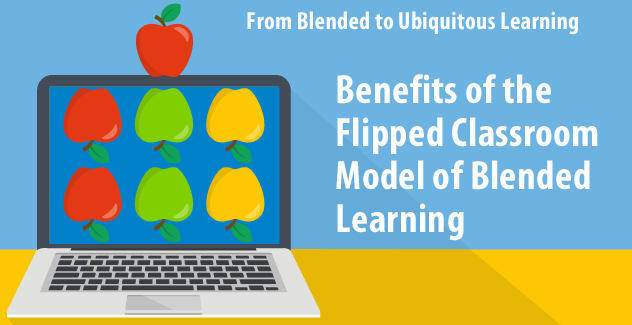
In the initial post of this series, we discussed the most frequently used blended learning models. This post will focus on the first of those, the flipped classroom. We will discuss its specific advantages, which, as stated in the first post, are primarily in the greater degree of flexibility of content delivery and in the increasing interactivity the format enables for in-class meetings. We will look at both of those in more detail, as well as at ways to optimize set-up for teaching a course using a flipped model.
Benefits of the Flipped Classroom Model of Blended Learning
Benefit #1: Options and flexibility in content delivery encourage greater learner autonomy
A flipped classroom model approach to content presentation assumes that students work through new course content outside of class time. That means they come to class meetings ready to discuss and apply what they have learned, or to ask questions to clarify the content. Typically, the content will be presented through videos featuring narrated presentations, along with interactive tutorials, that can be created with flipped model software, such as SoftChalk. Most often, these materials will be embedded within an LMS (learning management system), such as Blackboard, Canvas, or Moodle. Content is presented in an asynchronous mode, allowing students to do the work at a time and place of their own choosing. This process transfers more control over learning to the student. Working independently, the student decides how many times to watch a video or whether to redo assigned assessments to improve scores and gain mastery.
Such decisions will be guided through information supplied by the system, in the form of feedback on student responses to formative assessment questions or scores/results from learning activities. Usually such feedback mechanisms will be set up to allow students to redo assessments and reset activities, since the goal is not formal testing but advancing learning. Ultimately, the student chooses how much to engage with the learning materials, as well as whether to follow up, either with questions in class or comments online. This leads students to take greater responsibility for their learning, an important step towards the ability to be an autonomous learner.
Benefit #2: Content delivery at home frees up class time for more interactive and collaborative learning activities.
Rather than sitting through an in-class lecture, students in a flipped classroom model engage in more active forms of learning. Those might involve activities as varied as small group discussions, role-playing skits, or individual teacher-student sessions. Assuming students come to class having acquired new knowledge through online activities, in-class sessions enable application of that knowledge to problem-solving, connecting to previously learned content, or engaging in collaborative learning projects. Learning by doing involves using what has been learned, thereby leading to greater internalization and practical usability. In-class activities can supply that dynamic.
Ideally, learning activities in class will be shaped by student needs and interests, with multiple options available, including engaging in remedial work or delving deeper into targeted or related content. In the process, the instructor continues to serve as the “guide on the side,” providing scaffolded learning support as needed. Such an approach continues to put students in the driving seat, helping to establish them as capable, independent learners. Having students serve as group discussion leaders or peer mentors advances the level of engagement, as well as helping to solidify knowledge. Explaining concepts to others requires a greater command of that content than simply responding to test questions. Learning by teaching is one gateway to a deeper learning experience.
What it takes to be successful in a flipped classroom format
Students in this flipped model are likely to need both support and encouragement. Help should be available both inside and outside of class. That includes technical assistance as well as opportunities for better understanding of course content. In addition to options for asking questions (online office hours, for example), it is advisable for instructors to be pro-active, regularly soliciting feedback and checking in with students on their progress. That can be done during class sessions or through online channels.
Whenever feasible, content should be presented in multiple modalities—not just text, but through images, audio, and video—so as to engage different learning styles and preferences. Students today are used to rich visuals in online information and communication. It’s more likely that they will engage with the content if it includes multimedia. This is especially important for this instructional format, as students will be working with the content on their own, unmonitored and without the instructor’s presence and encouragement.
In the next post we will be looking at the benefits of instituting another blended learning model, station rotation, the approach most often used in K-12 schools.
About 12: 12, is a founding partner and responsible for product research and design. Prior to SoftChalk, Robert was a founding partner of madDuck Technologies where he was a co-developer of the Web Course in a Box Learning Management System. He is the former Director of the Instructional Development Center at Virginia Commonwealth University and is currently a faculty member in their School of World Studies. His principal areas of research are in applied linguistics and international studies. He writes a regular column on emerging technologies for the peer-reviewed journal Language Learning & Technology (llt.msu.edu) and blogs on intercultural communication at http://acrossculturesweb.com/wp/.

Leave a Reply